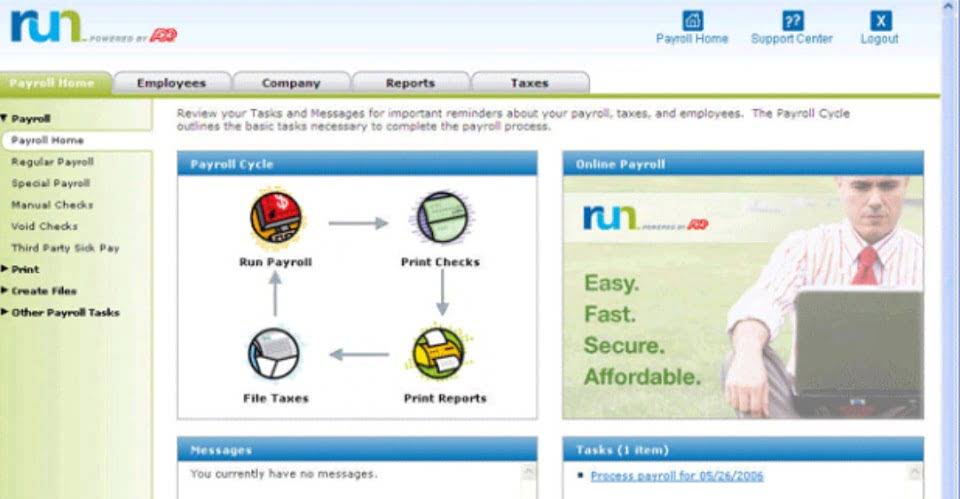
In many cases, it’s common to see more outflow than inflow in the investing category. Growing businesses are more likely to invest in long-term assets that support business growth. Negative cash flow from investing activities might be due to significant amounts of cash being invested in the company, such as research and development (R&D), and is not always a warning sign. In order to enhance your cash flow and grow your business, you must keep a positive cash flow, by keeping your inflow greater than your outflow.
Cash outflow from financing activities
What you really want is deep insight into the breakdown of cash inflows and outflows so you can continuously improve efficiency and map out more strategic growth plans. In summary, cash inflows are all the money received by a business from its core activities, investments, or financing. Recognizing types, sources, and formulas of cash inflows is essential for exam success and practical business.

How to calculate and report cash flow
Positive cash flow occurs when a business is left with cash even after paying all cash outflow expenses such as operations and debt. Positive cash flows within the CFI section, which can be generated in such ways as selling equipment or property, can be considered good. However, investors usually prefer that companies generate their cash flow primarily from business operations. In this article, we will closely examine the landscape of cash inflows to understand its essential role in impacting your business finances. It represents the company’s liquidity, facilitating operational sustainability and business growth. Thus, a positive and robust cash inflow is not merely a financial metric but a strategic imperative.

Ultimate Guide to Understanding Cash Inflow and Outflow
Net cash flow is the difference between the cash inflows and outflows of a business. Cash flow from financing activities relates to funds spent to finance the company and its operations. Examples include paying dividends to shareholders, clearing long-term debts, and buying back shares. Managing cash flow Mental Health Billing efficiently helps maintain timely debt payments, avoiding penalties or defaults. It also allows businesses to strategically pay down debt faster, reducing interest expenses and improving creditworthiness. Positive cash flow ensures a business can meet its daily financial obligations, such as payroll, rent, utilities, and supplier payments.
Businesses need to maintain a balance between leveraging external funds and preserving sufficient internal cash reserves. cash inflow vs outflow Investing activities involve the purchase and sale of long-term assets or investments that affect the future of the business. These activities typically include buying equipment, investing in securities, or acquiring intangible assets such as patents.
What to keep in mind when reading a cash flow statement

But your profit goes unaffected, as your balance sheet already tracks this expense. The ability of your business to generate the needed cash from norcashmal operations is measured by operating cash flows. When you deduct non-cash expenses from your net income to arrive at an outcome, which, when deducted from the change in working capital, gives you operating cash flow. To meet the set goals for your business, there are important processes and practices that you need to commit to and implement. Every finance department should prepare cash flow statements and engage in forecasting outflows and inflows, looking out for shortfalls and possible surpluses.
If they made $2000 in sales and paid $400 in operational costs (like payroll or rent), their operating cash flow would be $1600. This could then be used to cover other operational costs, help free up more capital, or more. The cash flow statement is a record of cash paid or received by a business over a given period.

Understand the Essentials of Cash Flow Management
- We will also talk about why it is important for businesses to track these figures closely.
- In the cash flow from operations section, the $100 million of net income (“bottom line”) flows from the income statement.
- This statistic alone highlights how crucial it is to maintain a steady and well-monitored flow of cash.
- Cash inflow and outflow represent your business’s fundamental financial position.
- Therefore, it is crucial for FP&A professionals to evaluate the sustainability and implications of financing cash inflows on the company’s overall financial health.
- Without a steady flow of cash coming in, even the best-laid plans can encounter an obstacle.
Adoption of new technologies can improve operational efficiencies and open new revenue streams, influencing both cash inflow and outflow. Changes in taxation, labor laws, and industry regulations can affect cash flows by altering operational costs and financial obligations. The terms of debt, including interest rates and repayment schedules, directly impact cash outflow through debt service requirements. This may help understand the cash flow drivers and identify areas for improvement. In personal finance, cash inflow refers to the money an individual receives from various sources, such as their salary, investment income, and rental income. For further guidance on enhancing cash flows, check out this in-depth video on cash flow forecasting.
Creating and sticking to a strict budget ensures that spending aligns with actual cash availability. This prevents overspending and promotes prioritization of essential expenses. Customers appreciate flexibility in how they pay, such as credit cards, bank transfers, online payment portals, or mobile payments. You can find the discounted cash flow formula in textbooks or on the Internet and use a table of Present Values to calculate DCF. Zions Bank provides an online Discounted Cash Flow calculator for business valuation.
This is the money that leaves your business to pay for things like rent, salaries, and buying new inventory. Every time you pay a bill or purchase something for the business, it represents cash outflow. For example, paying suppliers for raw materials or settling monthly utility bills are classic examples of cash outflows. Cash inflows are a fundamental component of financial planning and analysis, as they directly impact a company’s liquidity and ability to meet its obligations. Understanding cash inflows allows FP&A professionals bookkeeping to create accurate forecasts, budgets, and financial models that reflect the company’s operational realities.
